Important preliminary remarks
As with Kaby Lake, Intel has no longer realized the contact between Die and Heatspreader by metallic solder at Kaby Lake-X, but has also dodged cheaper TIM (Thermal Interface Material). This is not quite as critical in terms of actual power losses as skylake-X, but quite annoying for overclockers and low-temperature fanatics.
In order to remain comparable to the Skylake-X, we are therefore consciously relying on our Alphacool Ice Age Chiller 2000 (industrial compressor cooler), on whose application and the achieved results we want to go into more detail in the course of the following tests. However, with the smaller CPUs, an AiO compact water cooling would certainly have been sufficient, as long as one does not want to overclock well above 5 GHz.
We have determined the power consumption directly on the motherboard after the voltage converters (and thus on the CPU), whose losses must of course also be taken into account by the end customer in the estimation of the required power supply power. However, since these values are very model dependent on the respective motherboard (up to 30 watts and more), we deliberately used only the pure power consumption values of the CPU. The results come from the appropriate sensors. as well as the shunts and corresponding voltage measuring points on the motherboard.
Power consumption at normal clock and various workloads
First of all, let's compare the two Kaby Lake-X CPUs with the other relevant CPUs, before devoting ourselves to the details and the possible overclocking and their consequences in the form of power consumption. We determined the results with our motherboard Out-Of-The-Box, because a significant voltage reduction brought nothing except stability problems.
In the Idle, both Kaby Lake-X are significantly below the previous models and also significantly below what the current Ryzen CPUs absorb in terms of performance. It can be assumed that a large part of this is due to the severed iGP, which is more important, especially when idle.
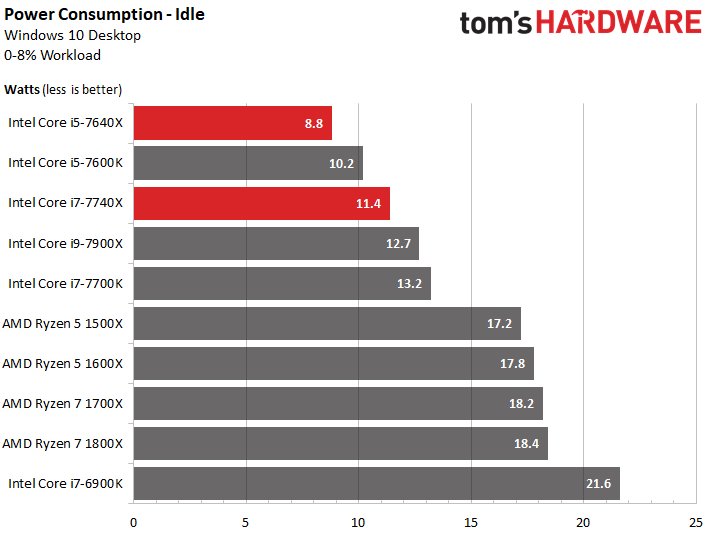
Even when working very relaxed with AutoCAD 2015, where never all cores are really used, the two new Kaby Lake-X CPUs are slightly higher than the corresponding Kaby Lake counterparts in terms of power consumption. These are not galaxies, of course, but it is something more than just a possible measurement inaccuracy, especially since the results are reproducible.
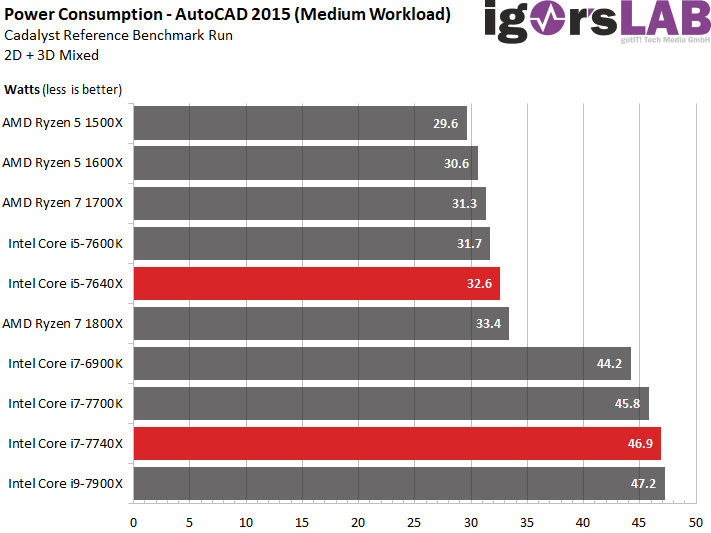
In gaming, the picture is very similar, especially since the performance achieved in FPS is also roughly the same. The equivalent CPUs take nothing for good.
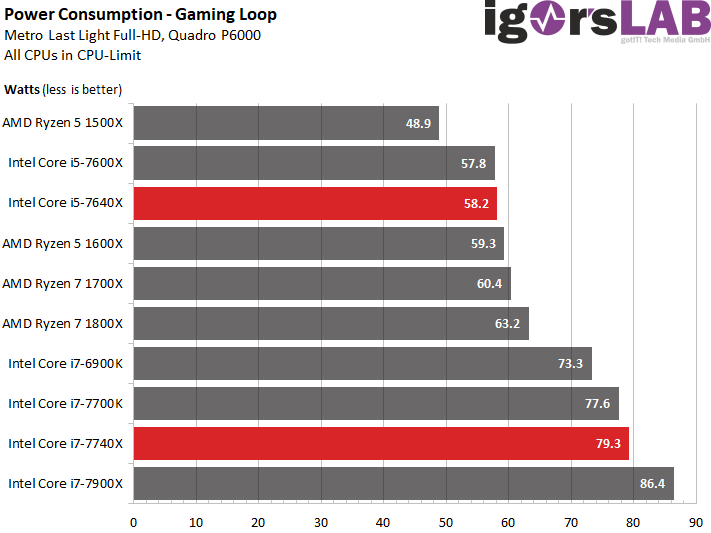
An interesting facet is the Torture Loop, where the new CPUs were a bit more economical. Why the picture is now completely reversed, as in gaming, we can't imagine at the moment, even if the differences are in the 2-watt range and as usual also very small.
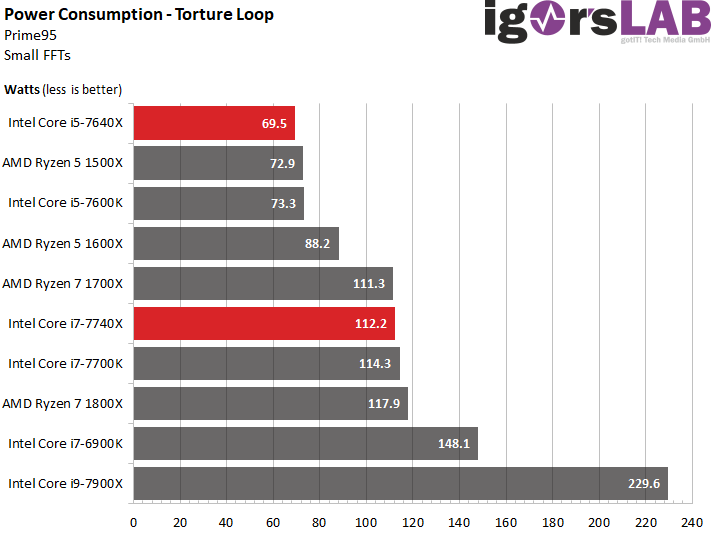
Overclocking and stability
We now overclock both Kaby Lake-X and want to see if there are any significant benefits with the larger heatspreader and he disabled iGP. However, we would like to start with a graphic from the binning program of a motherboard manufacturer that is quite revealing, at least for the Core i7-7740X and the required voltages:
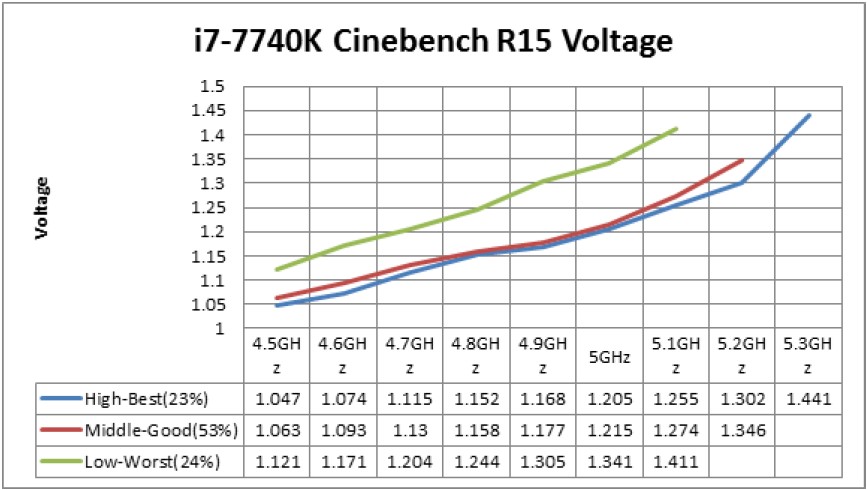
Our Core i5-7640X could be overclocked up to 5.1 GHz, the Core i7-7740X even up to 5.2 GHz. Thus, both CPUs should be in the normal midfield and also correspond to the expected average. However, we did not experiment well above the 1.4V out of respect for the silicon despite Chiller. After all, the Core i7 7640X also started with 5.3 GHz up to the desktop, but after a few minutes BF 1 was then end terrain and the system simply froze.
We tested the stability of the overclocking steps with Cinebench R15, The Witcher 3, Luxrender (console) and BF 1, but we have deliberately dispensed with the AVX-heavy Prime95. First, let's consider the relationship between power consumption and performance for the Core i5 7640X in both runs (multi- and single-threaded):
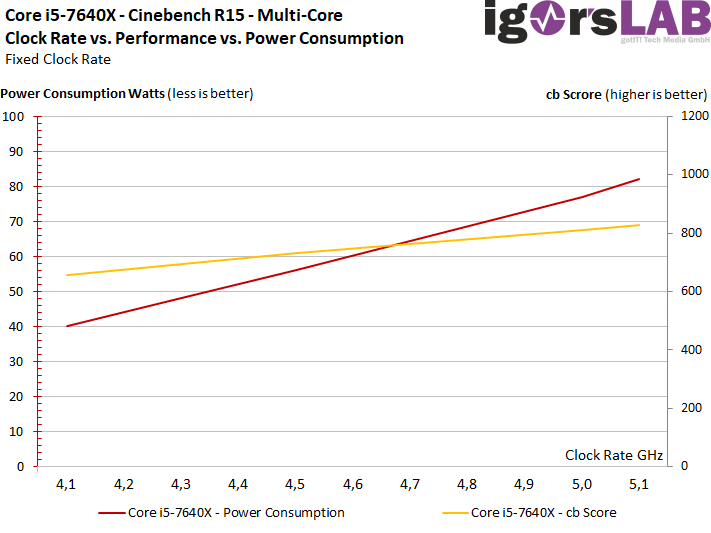 |
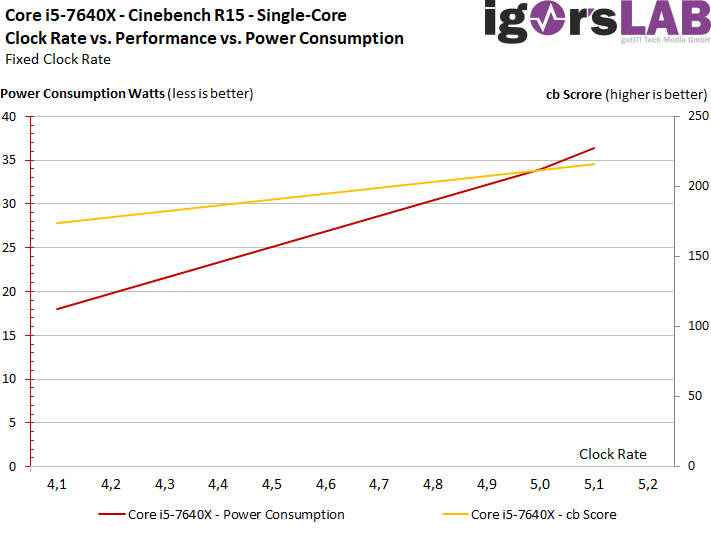 |
The system ran stable at 5.1 GHz in 10 runs with 1.28 voltS Vcore and the CPU absorbed a maximum of 82 to 83 watts of power.
With the core i7-7740X that can be overclocked up to 5.2 GHz, the current account looks very similar and there is no extreme curvature of the curve, which would represent an exploding power consumption. On the contrary, the CPU remains constant and largely inconspicuous until it simply refuses service. For this too, we have the right curves ready:
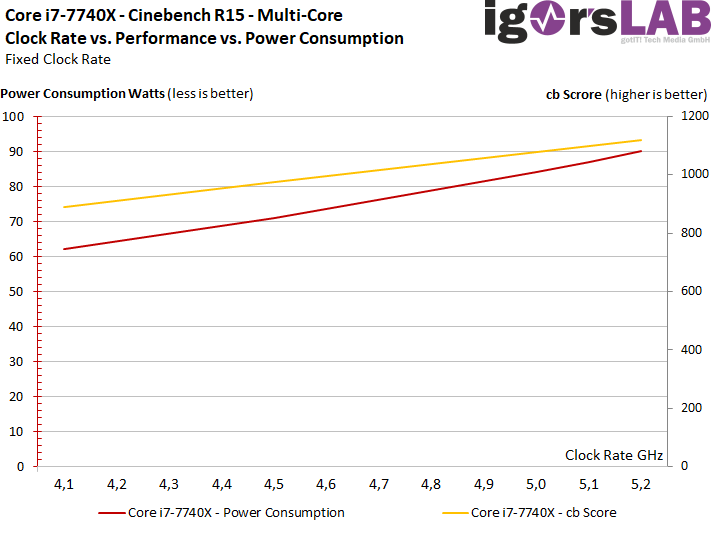 |
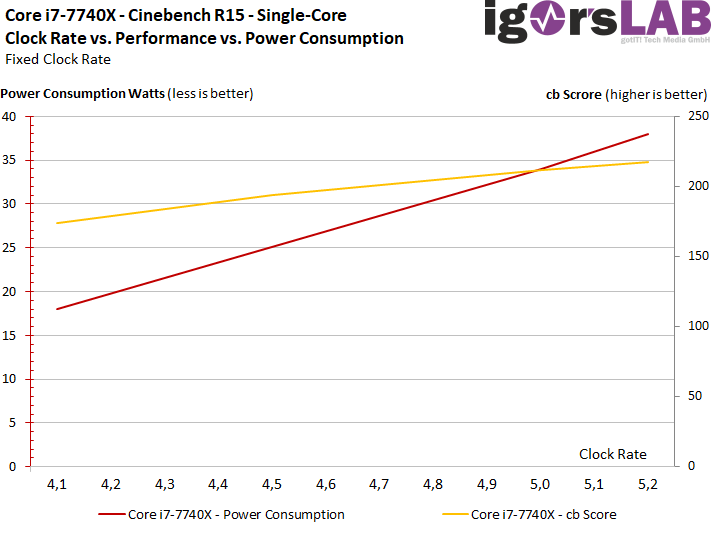 |
If you look at the curves of power consumption and performance over the individual clock stages very closely, you can see that the power consumption increases a little faster with increasing clock sizing than the almost linearly scaling performance, but not so extreme , as feared. If you also compare the single-core performance with the required electrical power, the course looks quite similar again. At a good 90 watts for 5.2 GHz, the thermal load is not as extreme as originally feared. This should even be coolable with a good AiO compact water cooling system.
The overclocking has worked really well for both CPUs, which are to be rated more average, especially since power consumption and performance gain do not really drift significantly apart.
- 1 - Einführung und Übersicht
- 2 - X299-Chipsatz und Testsystem
- 3 - Anomalien und Probleme, Battlefield 1
- 4 - AotS Escalation, Civization VI, GTA V
- 5 - Shadow of Mordor, Project Cars, Rise of the Tomb Raider
- 6 - Workstation- und HPC-Performance
- 7 - Leistungsaufnahme und Übertaktung
- 8 - Temperaturverläufe und Delta-Werte
- 9 - Zusammenfasung und Fazit
















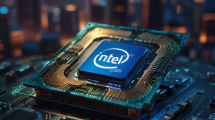















Kommentieren